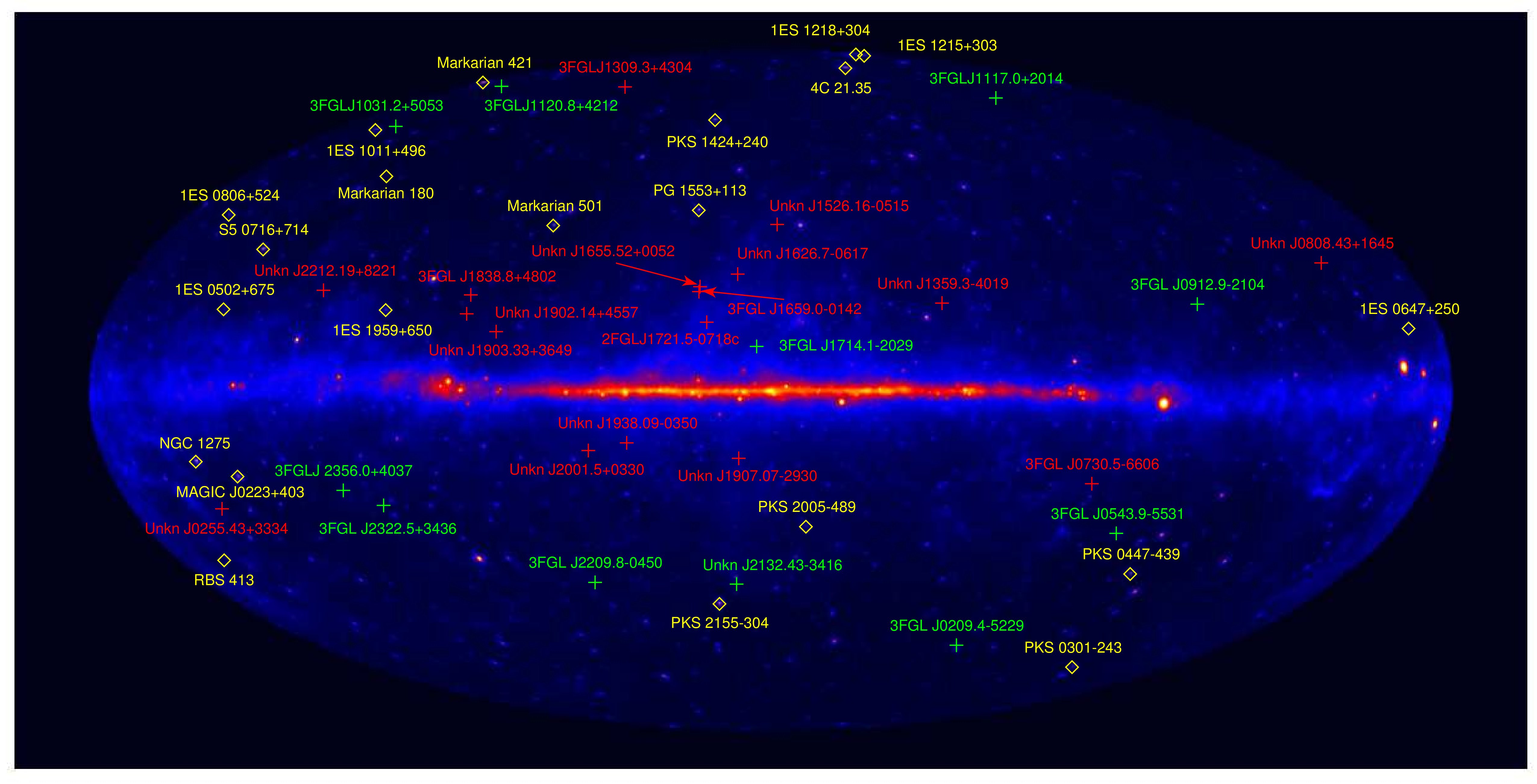Cherenkov Telescope Array Studies of Dark Matter and AGN
The search for an annihilation or decay signal from DM particles, and the discrimination of this emission from astrophysical foregrounds, requires excellent energy resolution, background rejection power, collection area and angular resolution. CTA will meet all these requirements, with a big improvement in current limits possible with targeted observations of dwarf galaxies, galaxy clusters and the Galactic Centre (GC). Furthermore, given the considerable theoretical uncertainty on the mass of DM candidate particles in extensions to the standard model, the wide energy reach of CTA, from around 20 GeV to 100s of TeV, is a huge asset.
The first CTA telescopes, including the initial `mini array', are expected to be operational on the southern site in Chile in 2017, with the first data coming shortly thereafter. Over the next 5 years, the arrays will grow in size and sensitivity, with new scientific discoveries expected even during this phase. It is therefore time to look at how CTA can be used to hunt for dark matter.
We are focussing on three areas: first, connecting the gamma-ray emission that we observe from the Galactic centre firmly with dark matter; secondly, hunting for gamma rays from satellite galaxies of the Milky and finally, looking for dark matter and cosmic ray emission in active galaxies.
To connect the gamma ray emission from the GC with dark matter requires that we understand the astrophysical sources of gamma rays in that crowded region ? diffuse emission, unresolved point sources, pulsars etc. In addition, we have to take out a recently-identified source of emission caused by electrons and positrons produced by DM annihilation. By taking all of these into account, we will be able to simulate the likely results under different scenarios from CTA observations, exploiting its superior angular resolution and greater energy reach.
 |
| All sky image showing the locations of the clusters found with the DBSCAN-based clustering algorithm in Fermi data above 100 GeV. Green crosses show significant clusters, i.e. those with TS > 25. Those with TS < 25 are indicated with a red cross and the 21 objects that are already known TeVCat sources by a yellow diamond. This analysis resulted in the detection of 9 new sources above 100~GeV, mostly AGN. We will extend this successful approach by using an algorithm better-suited to the detection of the emission profiles expected from Milky Way satellite galaxies. |
Milky Way satellite galaxies, such as the dwarf spheroidal galaxies (dSphs) of the Local Group, could give a clear and unambiguous detection of DM annihilation. Dwarf spheroidals are gravitationally bound objects believed to be DM dominated, with up to 1000 times more mass in the form of DM than visible matter. While they are further from Earth than other potential DM targets, dSphs are an attractive target to search for a DM signal due to their comparatively low astrophysical background. We have developed a cluster-based analysis technique to search for new gamma-ray sources in the Fermi-LAT data. This technique uses the DBSCAN algorithm to pick out clusters of events of arbitrary shape from a noisy dataset. So far, this approach has been used very successfully to search for point-like sources above 100~GeV in the Fermi data, i.e. primarily AGN. We will extend this technique to search for DM-dominated satellite galaxies of the MW.
DM annihilations could act as a source of non-thermal (indeed relativistic) particles which can then be further accelerated in astrophysical shocks. The DM annihilation produces an energy spectrum with a cut-off at the particle mass, and the shock-accelerated particles follow a power law over all energies. The combination of the two results in a characteristic spectrum. Jets in AGN represent a particularly attractive possibility for this mechanism, whereby DM annihilation products may be jet-boosted in the vicinity of dark matter-enhanced density spikes around supermassive black holes. We will identify suitable candidate AGN encompassing e.g. a range of black hole masses and redshifts for study and derive possible gamma-ray spectra in the light of this mechanism. The resulting spectra will be tested using Fermi-LAT data and we will also simulate likely results with CTA and (if the arrays have enough sensitivity by this point) test the theory using CTA observations.
Staff involved: Paula Chadwick, Celine Boehm.
Contact Details
Centre for Extragalactic Astronomy,Ogden Centre for Fundament Physics - West,
Department of Physics,
Durham University,
South Road,
Durham DH1 3LE
Tel: 44 (0)191 3343635





